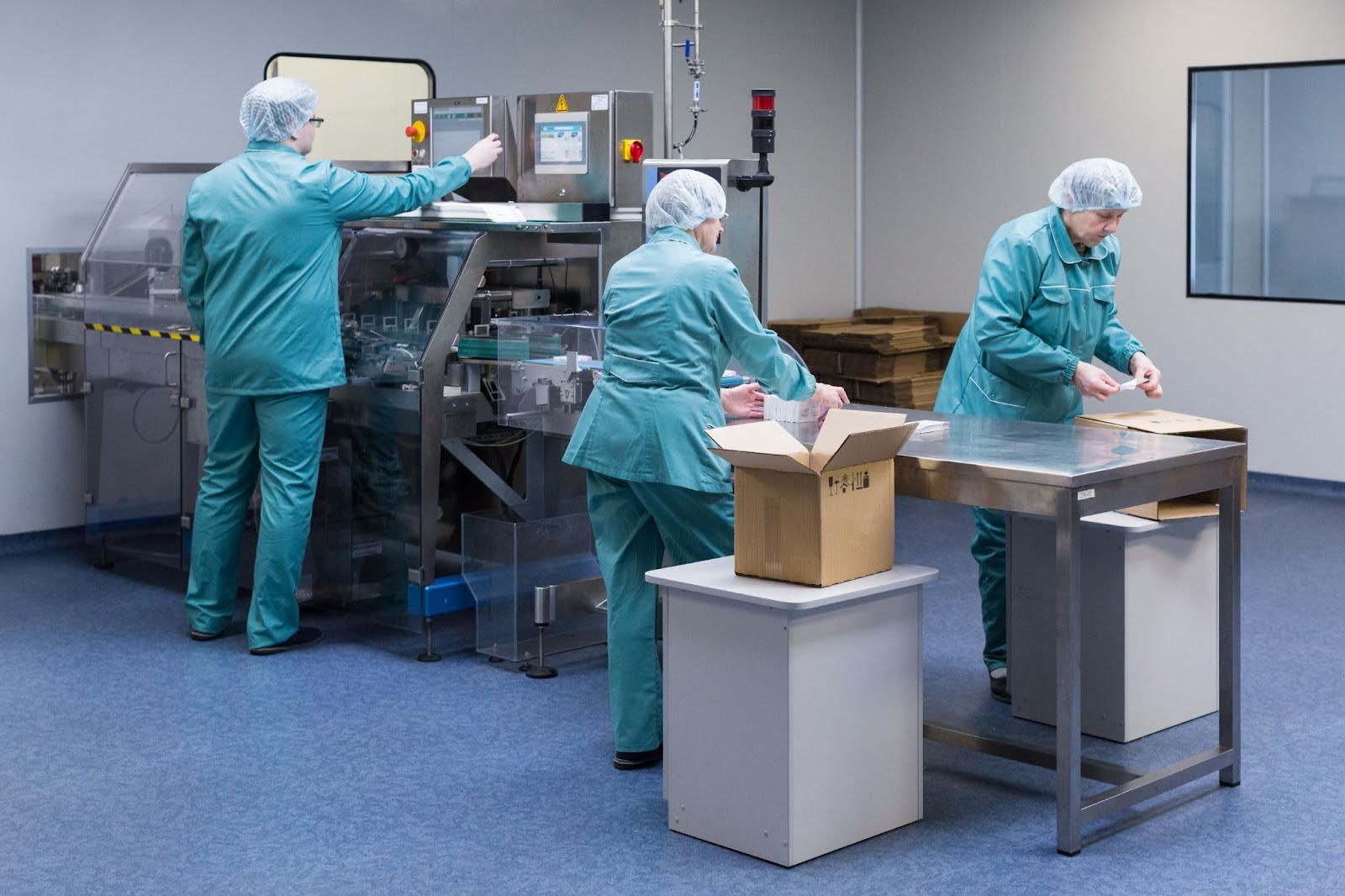by Vaibhavi M.
7 minutes
Visual Inspection & Micro Risk Linkages In the Pharmaceutical Cleanroom Industry
Explore how visual inspection links to microbial risk and strengthens contamination control in modern pharmaceutical cleanrooms.

In pharmaceutical manufacturing, particularly in the production of sterile drugs, visual inspection has traditionally been regarded as the final checkpoint for detecting particulate or cosmetic defects. But with the tightening of global standards under EU GMP Annex 1 (2022) and FDA aseptic processing guidance, this stage is no longer a simple quality gate, it is a risk linkage node between contamination control strategy (CCS), environmental monitoring (EM), and microbial risk management.
Understanding how visual inspection outcomes relate to microbial contamination risks is crucial for achieving true sterility assurance. Let’s break down how these two worlds, inspection precision and microbial risk control, are now converging in cleanroom operations.
The Evolving Role of Visual Inspection
Historically, visual inspection focused on detecting visible particles, fibers, and cosmetic defects in vials, ampoules, or syringes. Operators were trained to identify rejects under controlled lighting and background conditions. However, as manufacturing shifts toward automated lines and robotics, visual inspection is evolving into a data-generating, risk-assessing function.
Modern inspection systems don’t just reject defects, they record trends.
For instance:
- Recurring reject patterns (e.g., particulate presence in one filling line segment) may indicate upstream contamination issues.
- Airflow turbulence or shedding of materials near inspection stations can trigger the introduction of particles or harbour microbial growth points.
- Inconsistent lighting or operator fatigue can skew reject rates, creating false quality signals that mask genuine trends in microbial contamination.
Regulators are now looking at visual inspection not in isolation, but as an integrated verification element within the Contamination Control Strategy (CCS).
How Microbial Risk Connects to Visual Inspection
Microbial contamination doesn’t always present visible signs. However, the conditions that lead to microbial risk, particle ingress, human intervention, and environmental instability, can also manifest as visible quality deviations. This is where micro risk linkage comes into play.
Visual defects can serve as indirect indicators of microbial control failures. For example:
- Fibers or hair detected during inspection might trace back to gowning discipline or garment material shedding, potential vectors for microbial contamination.
- Container-closure integrity issues such as cracked vials or missing stoppers, compromise sterile barriers, increasing microbial ingress risk.
- Residue films or stains on product surfaces could indicate improper cleaning validation or residue buildup, conditions favoring microbial growth.
Every reject pattern tells a story. When properly trended and correlated with EM data, such as non-viable counts, surface swab results, or airflow visualisation, visual inspection becomes a diagnostic tool for identifying systemic micro risks before they escalate.
Integration with Contamination Control Strategy (CCS)
Under the revised Annex 1, the CCS framework demands that all quality systems, from gowning to visual inspection, feed into a unified contamination risk model.
Visual inspection data can strengthen CCS in several ways:
- Feedback loops: Linking inspection rejects with environmental and process deviations helps identify contamination sources faster.
- Preventive triggers: When certain defect rates spike, it can trigger microbiological investigation or preventive maintenance on HEPA filters, filling needles, or isolator gloves.
- Holistic trending: Combining data from inspection, EM, and cleaning validation gives a 360° view of aseptic performance and risk drift.
Automation enhances this further. Vision systems integrated with machine learning (ML) can identify patterns invisible to humans, such as slight variations in particle morphology or recurrent defect locations, which might indicate early microbial or particulate risk signals.
Automated vs. Manual Inspection: The Microbial Angle
Manual inspection still dominates in many sterile operations, especially for high-value, low-volume products. But manual methods are inherently variable, operator fatigue, inconsistent lighting, and subjective judgment can introduce bias.
From a microbial control standpoint, manual inspection also increases human intervention, which remains the single largest risk of contamination in cleanrooms. Each manual handling step, even under Grade A/B conditions, introduces potential for:
- Gown breach or glove touch contamination.
- Shed skin particles or fibers.
- Temperature or humidity fluctuations around the inspection booth.
Automated inspection, when properly qualified, reduces these risks. However, it introduces its own micro linkage challenges, machine contact surfaces, lubricants, and camera enclosures can all become potential microbial port sites if maintenance and cleaning protocols are inadequate.
A well-designed risk assessment (FMEA) for automated inspection systems must therefore include:
- Regular bioburden and residue checks on machine parts.
- Validated cleaning cycles for inspection conveyors or glass handling fixtures.
- HEPA-filtered enclosures around critical optical zones.
Trending Data for Root Cause Correlation
True contamination control lies not in individual event response, but in trend recognition. A rejected vial today may seem trivial, but 50 similar rejections across batches can signal a pattern.
Leading pharma facilities now use data correlation dashboards linking:
- Visual defect type and location.
- EM data from adjacent zones.
- Operator and shift details.
- Equipment maintenance logs.
This correlation enables root cause visualization, revealing micro risk linkages invisible in siloed systems. For instance, if particulate rejects spike after filter changeouts, it may indicate inadequate verification of post-maintenance cleaning.
By combining inspection data with microbial metrics, manufacturers can move from reactive correction to predictive prevention, the core principle behind the CCS and Annex 1 updates.
Validation, Qualification & Ongoing Monitoring
Regulatory authorities expect that visual inspection, whether manual or automated, is validated with defined detection thresholds, training programs, and ongoing performance verification.
From a microbial risk perspective, this validation should include:
- Assessing whether inspection areas maintain environmental classifications consistent with the product grade.
- Routine monitoring for viable and non-viable contamination within inspection zones.
- Trending of reject categories alongside microbiological deviations in the same time frame.
Many companies are now aligning their visual inspection qualification protocols with their CCS documentation, ensuring that defect detection capability directly supports the identification of contamination risks.
The Future: AI-Powered Visual-Microbial Integration
Artificial Intelligence is beginning to bridge the final gap between visual inspection and microbial control. Smart systems can:
- Differentiate between true particulate contamination and cosmetic noise.
- Integrate with LIMS to automatically flag micro investigations based on reject trends.
- Generate predictive alerts correlating visual defect spikes with potential EM drift.
The convergence of digital analytics, real-time data, and cleanroom monitoring will transform inspection from a reactive quality gate to an active risk sentinel in sterile manufacturing.
Conclusion
Visual inspection is no longer just about what the eye can see, it’s about what the data reveals. In the post-Annex 1 era, connecting visual inspection findings to microbial risk pathways is essential for building resilient, contamination-proof cleanroom operations.
When inspection data is contextualized within environmental, human, and equipment factors, it becomes a powerful tool for preventing deviations before they occur. The pharmaceutical cleanroom of the future will rely not on isolated checks, but on interconnected intelligence, where every visual signal strengthens sterility assurance.
FAQs
1. Why is visual inspection critical in sterile drug manufacturing?
It ensures the detection of particulate and cosmetic defects that may indicate upstream contamination or process anomalies affecting sterility.
2. How can visual defects indicate microbial risk?
Many visible defects—fibers, residues, or cracks—originate from practices or materials that also enable microbial ingress, forming indirect micro risk linkages.
3. What’s the role of automation in reducing microbial risks?
Automated systems minimize human intervention, the primary source of contamination, but require their own hygienic design and cleaning validation.
4. How does Annex 1 impact visual inspection practices?
Annex 1 mandates integration of inspection data into the Contamination Control Strategy, promoting proactive risk management and data trending.
5. Can AI improve contamination control in visual inspection?
Yes, AI-driven analytics can correlate defect trends with environmental data, enabling predictive identification of contamination risks before they occur.




